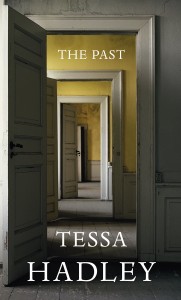 Published by Jonathan Cape 3 September 2015
Published by Jonathan Cape 3 September 2015
368pp, hardback, £16.99
Reviewed by Alison Burns
Kington House is a small Somerset rectory, built c.1820. Occupied for years by the bookish and ‘very high church’ minister and poet Grantham Fellowes, and his wife Sophy, it is the beloved childhood home of their four grandchildren: Harriet, Roland, Alice and Fran. The time has come for them to consider selling it.
One hot summer’s day, they begin to assemble, for an over-ambitious three-week stay during which a decision must be reached. Alice brings 20-year-old Kasim, the son of her ex-lover. Fran brings her two young children, Ivy and Arthur, nine and six, but not their father, Jeff. Harriet, who has no children and loves solitude, comes alone. Roland brings his new, Argentinian, second wife, Pilar, and sixteen-year-old Molly, his daughter from the previous marriage. The scene is set for misunderstandings worthy of an Iris Murdoch novel.
Hadley’s characters are a bracing mix. They start arguing almost immediately. Alice, an actress manquée and given to melodrama, arrives first (she thinks) and does the flowers. Fran is next: frazzled mum, and teacher of Maths at her local comprehensive, she launches into preparation of supper. Harriet (who arrived first but made herself scarce) works with asylum seekers; she is, for various reasons, distinctly uptight. Roland, annoyingly, arrives a day late. He is an academic philosopher, critic and talking head. His wife is a commercial lawyer: brisk, modern, well-organized, smart, she appears to be everything Roland’s sisters are not. Kasim is a moody young man, less confident than he appears. Molly, who catches his attention, is, to begin with, innocently solemn.
The key fact is that the siblings’ mother, Jill, an adored only child, died young, and their father abandoned them.
So begins a story in which the reader has access to the interior lives of most of the central characters. Hadley is very good on this hitherto close-knit family’s assumptions, sensitivities and ‘tipping-points’, and their ways of provoking each other: ‘They knew each other so well, all too well, and yet they were all continually surprised by the forgotten difficult twists and turns of one another’s personalities, so familiar as soon as they appeared.’ She is also very good on the young children, especially on how alert they are to the adults’ changes of mood, how easily they misinterpret what they cannot yet understand, and on what they get up to when preoccupied grown-ups leave them to their own devices.
Ivy and Arthur have a sub-plot all of their own, in which they discover the rotting remains of what they think is a local dog in an abandoned cottage strewn with pages from porn magazines. Thoroughly disturbed, Ivy invents a ritual into which she co-opts her younger brother. No-one can think what has got into her. The adults, meanwhile, are coping badly with the effects of each other’s company and their memories. Both Alice and Harriet snoop in their brother’s room, and Alice reads aloud some of his letters to their dying mother, causing enormous offence to almost everyone.
A vivid middle section, set in 1968, gives us an insight into their mother’s story. Jill arrives home abruptly, with her three children, having decided to leave her husband. Hettie and Roly and little Ali are shown as young allies, sensitive to their mother’s moods and in love with the house and their grandmother. We learn that Jill was clever, the apple of her father’s eye, and that her journalist husband Tom was unfaithful. Just as abruptly, Jill decides to go back to him, but not before having a brief fling of her own.
Back in the present, with constant rain, tensions rise in Kington House. Pilar is distracted by her own family history; she has confided in Harriet, not realizing that Harriet has a crush on her, and this leads to a near-fatal misunderstanding. Kasim and Molly have drawn closer, watched and assisted ever more closely by the two little spies, Ivy and Arthur. A somewhat melodramatic denouement concludes with no bones broken and a decision to sell.
From someone who can describe an English waterfall in summer so brilliantly as ‘a swell of liquid in a sodden long fall of emerald moss’ and as ‘a swelling silver rope’, Hadley’s rendering of the wider Somerset landscape, somewhere between the coast and Exmoor, is disappointingly imprecise. However, on emotional extremes she is accurate to the nth degree. As Alice tends the wounded Harriet, she is ‘fearful, to see how far her sister was straying from her old self, undoing the vexed knots which had held her tight. She knew from experience what a great labour it was, binding up again all the mess of self, which in your extremity you had unbound.’
